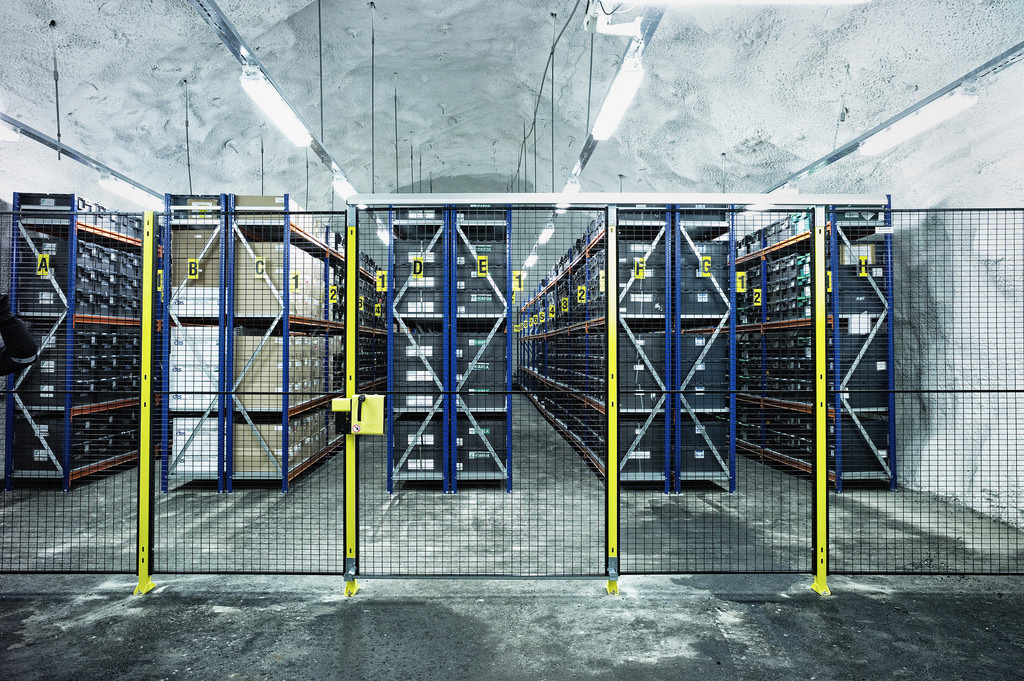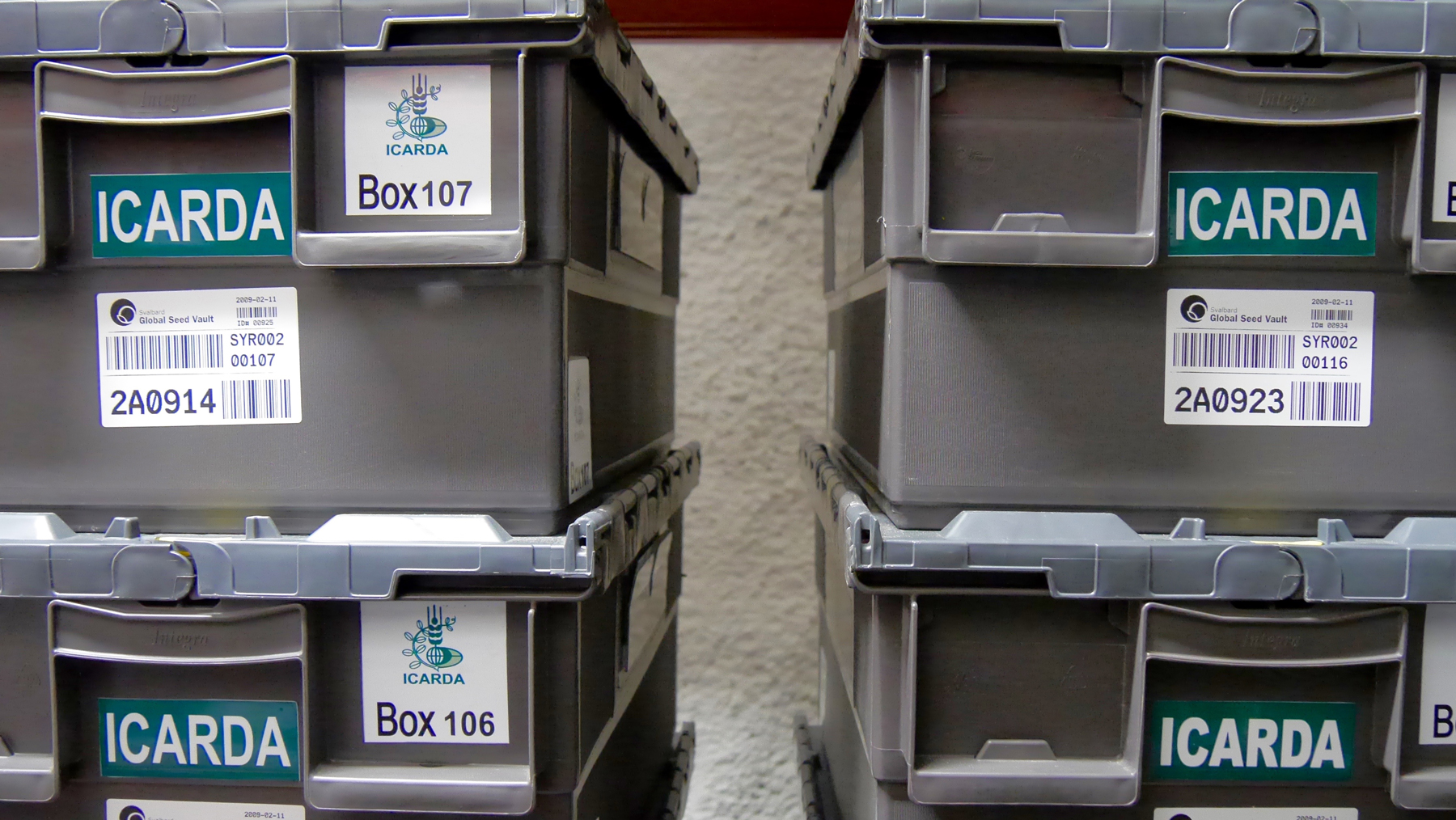What does Doomsday look like?
“Arctic ‘Doomsday Vault’ opens to retrieve vital seeds for Syria”
(CNN, 19th October, 2015)
“The doomsday vault: the seeds that could save a post-apocalyptic world”
(The Guardian, 20th May, 2015)

The Svalbard Global Seed Vault (SGSV) is often referred to as the “Doomsday Vault.” Evocation of an apocalypse that we’ve all seen in the movies – red deserts, rats and roaches; only the strong survive – is built into that term. But is it how anyone involved in its work really conceives of it? After all, come Doomsday, who’s going to have the presence of mind to swing a quick trip to Svalbard, open the vault, organise an effective propagation programme, and thereafter, save humankind?
Doomsday is the worst case scenario that it’s easiest to go to. It made its way into most of the headlines that reported the first withdrawal from the vault since its inception in 2008, made by a formerly Syrian-based regional genebank in September 2015.
Most of the reports of the withdrawal noted that SGSV is built to withstand nuclear war. But these apocalypses distract from the here-and-now. They certainly distract from the real work of the vault, and its feeder institutions: the world’s agricultural and crop genebanks. The SGSV’s mission is to support the International Plant Treaty’s aims in conserving, securing and sharing the world’s plant genetics for food and agricultural security.
So ‘Doomsday’ is a cipher for a world in which that goal is threatened. What threatens it? Three of the horsemen of the apocalypse, for a start: drought, disease, war. As well as power-failure. And it’s that last as much as those other three that have brought about the latest doomsday headlines for the SGSV.
For Nordgen, the Nordic Genetic Resource Centre, the seeds held in the SGSV are its third stream: they have an “active” collection at their headquarters in Malmo, Sweden, that are distributed on request to farmers, breeders or hobbyists; and a back-up in storage in Denmark. And for many of the genebanks represented here, these are not the only back-ups. This seed wealth, in accordance with the Treaty, is widely shared. The International Center for Agricultural Research in the Dry Areas, ICARDA, one of 15 groups that form the Consortium of International Agricultural Research Centers (CGIAR) was formerly headquartered in Aleppo, Syria. Each of those 15 research centres are global specialists in a particular research area, and for ICARDA, it is the agriculture of the arid regions. It is this region that is known as the origin of agriculture: archaeological studies of Mesopotamia indicate the spread of agriculture has its origins here, with seed cultivation occurring over 10,000 years ago. ICARDA has its own evocations: not an apocalyptic future but the grain-basket past of the “fertile crescent”.
Doomsday is the worst case scenario that it’s easiest to go to. It made its way into most of the headlines that reported the first withdrawal from the vault since its inception in 2008, made by a formerly Syrian-based regional genebank in September 2015.
In 2012, with the war in Syria showing no sign of ending, ICARDA’s staff managed to move its collection – concentrating on the 13% that it had not “backed-up” elsewhere – out of the country via Turkey and Lebanon. ICARDA’s collection had been accessible: distributed on request to farmers wanting to breed in different strains into their crop varieties, a practice as old as agriculture in the Middle East. With hostilities coming closer to ICARDA’s Aleppo facility, the threat not just of a misplaced airstrike or firefight, but also, and much more likely, of power-failure and therefore interruption to the electrical supply to the cold storage facility that kept ICARDA’s seeds at -14°C. ICARDA also sent samples to other international genebanks – and began propagating in Mexico – as well as the SGSV. It is a distributed collection now – a model which its scientists say suits it better given the diversity of its interests – across North and East Africa, and elsewhere in the Middle East, temporarily headquartered in Beirut.

Recent suggestions then, that the civil unrest in Syria was at least partially sparked by a long-running drought, evidentially connected to climate change form 2006 to 2009, make the realities of 2015’s doomsday withdrawal altogether more imaginable. ICARDA’s work in Syria included the development of drought-resistant varieties of crop, as well as innovative irrigation methods. In 2010, Mahmoud Solh, director-general of ICARDA wrote:
The drought in Syria may be slowly coming to an end, but the dry three years are having prolonged effects. It may be several years before life can return to normal in the northeastern part of Syria, but rural communities will need additional help in adjusting their production systems and practices to cope with the effects of global climate change in the future (Sohl 2010).
Recent suggestions then, that the civil unrest in Syria was at least partially sparked by a long-running drought, evidentially connected to climate change form 2006 to 2009, make the realities of 2015’s doomsday withdrawal altogether more imaginable.
Rather than being locked away for a distant apocalyptic future, the SGSV withdrawal shows the now-ness of these seeds and their uses. The icy back-up facility is a working architecture, as the ‘heritage’ of Mesopotamian seeds is a working practice, creating new strains to face an uncertain future. In Collecting Nature, Doherty reports that the Egyptian seedbank was looted in 2011, that war has severely affected seedbanks in Iraq, Afgahanistan, Cambodia and Rwanda, and that the national genebank of the Philippines was damaged during the 2004 tsunami. The SGSV is a safety net for that apocalypse, sure, but a rather more mundane withdrawal facility for an uncertain world in the meantime. Every day might be Doomsday.
References:
Dornith Doherty, 2015. Epilogue and Outlook: Collecting Nature / Archiving Eden, in Andrea Gáldy and Sylvia Heudecker (eds) Collecting Nature. Cambridge Scholars Publishing
Sohl, Mahmoud, 2010. Tackling the drought in Syria, Nature Middle East, 27 September, 2010.
http://www.natureasia.com/en/nmiddleeast/article/10.1038/nmiddleeast.2010.206
The SGSV is a safety net for that apocalypse, sure, but a rather more mundane withdrawal facility for an uncertain world in the meantime. Every day might be Doomsday.
